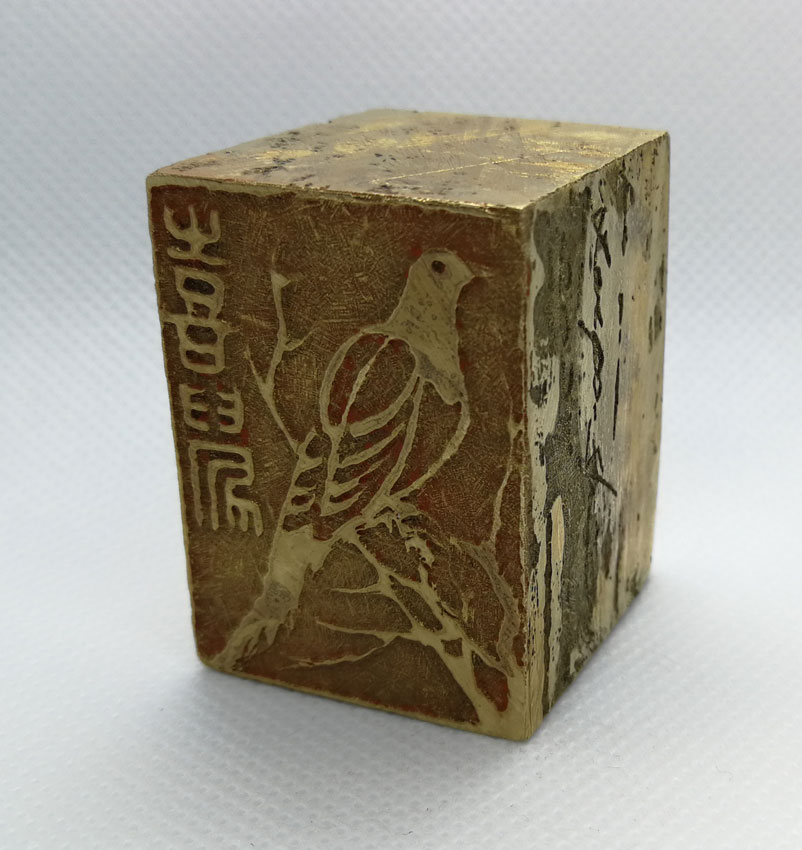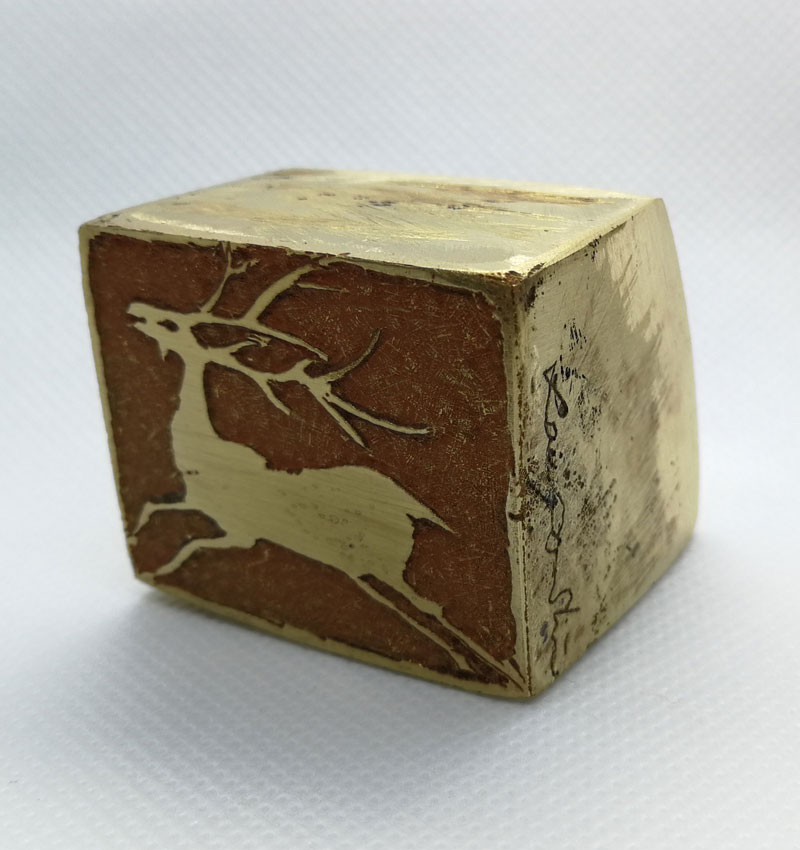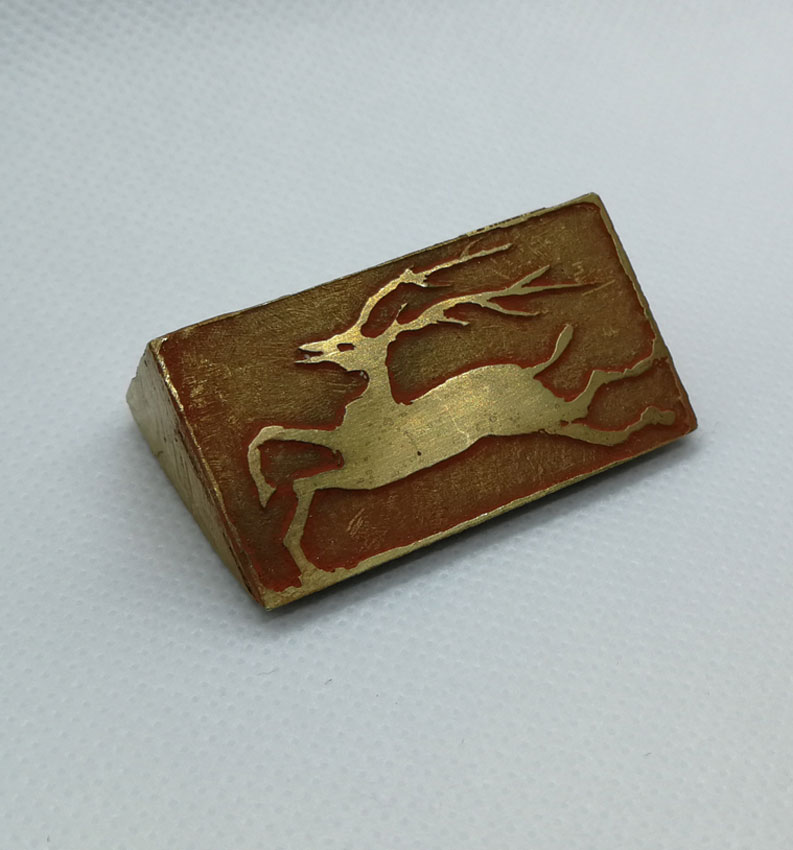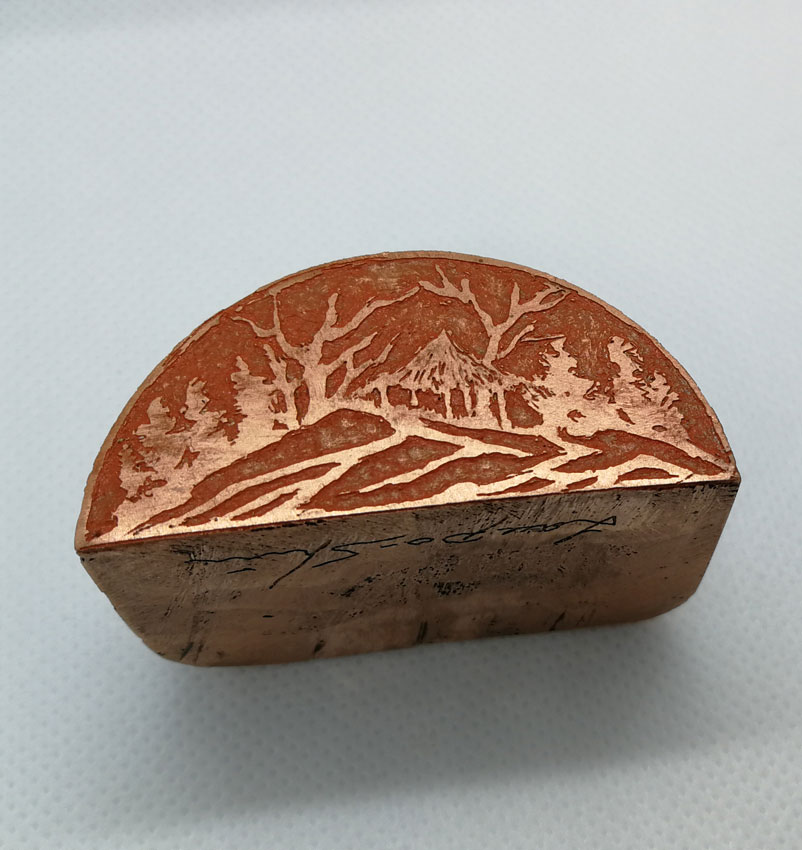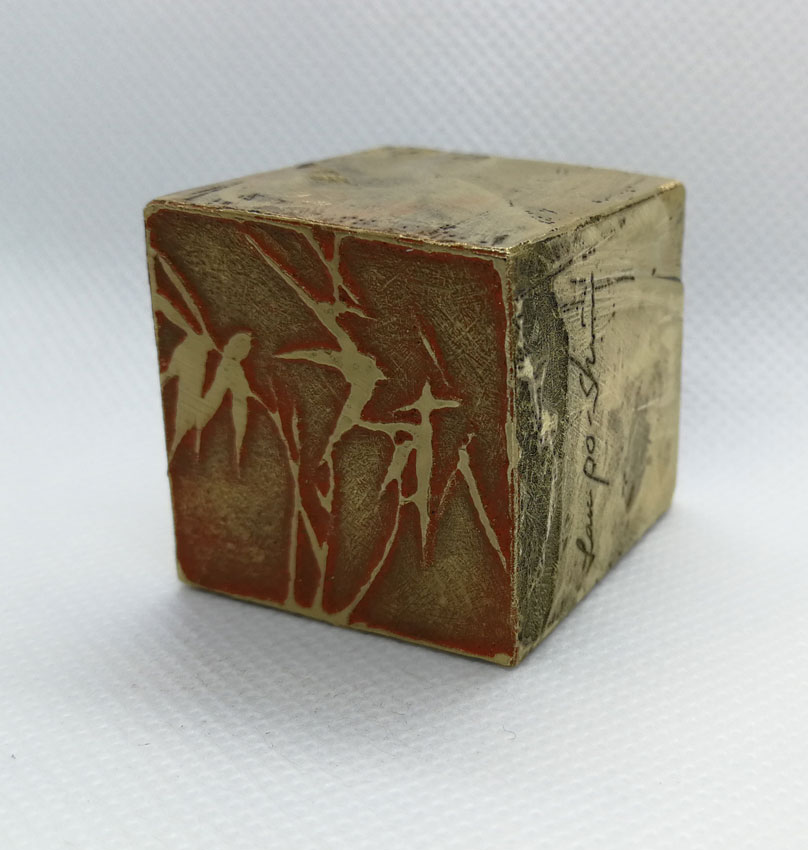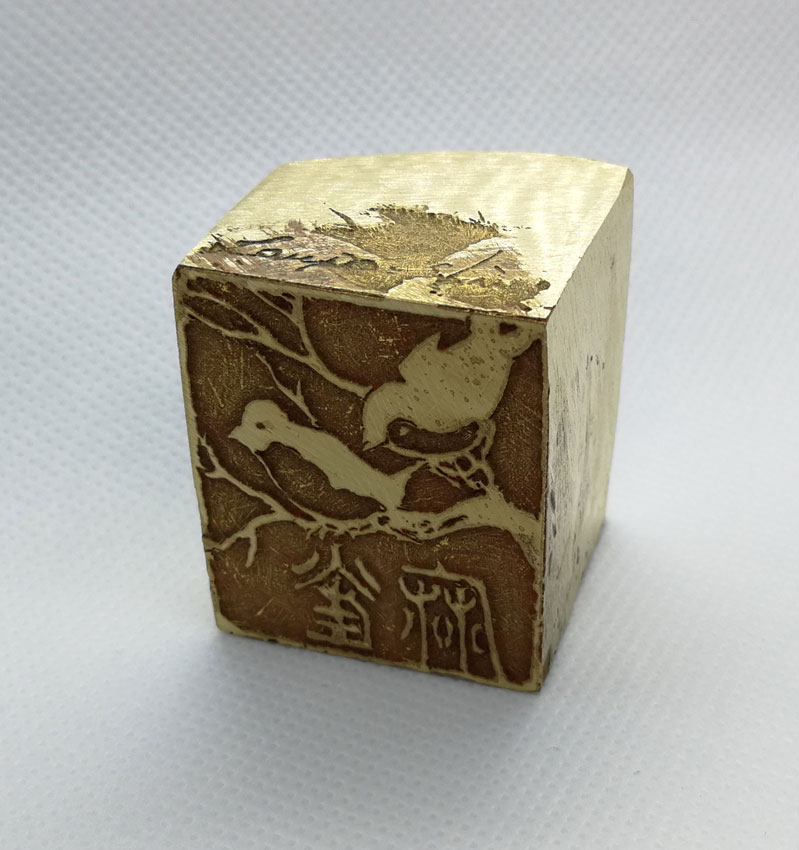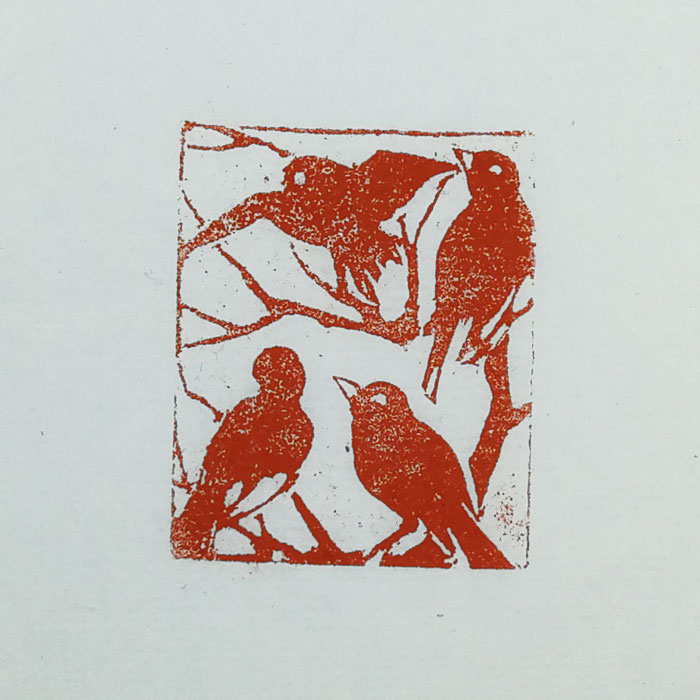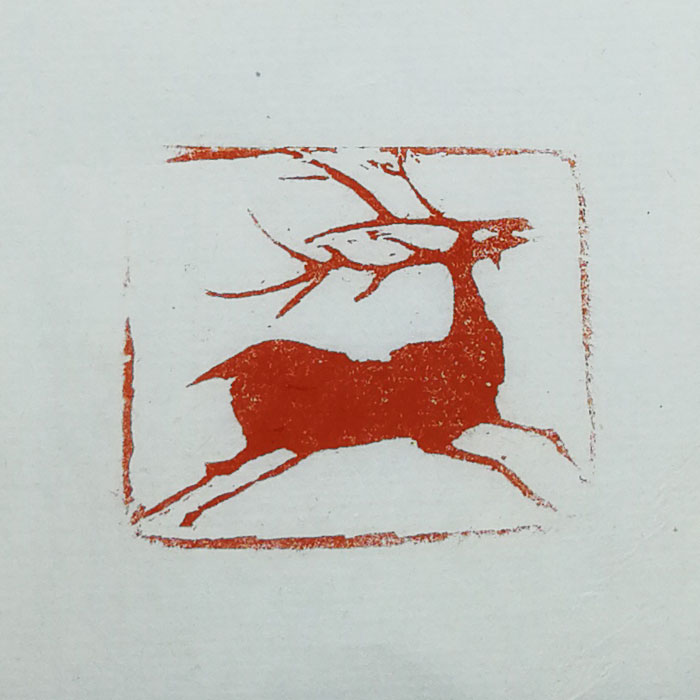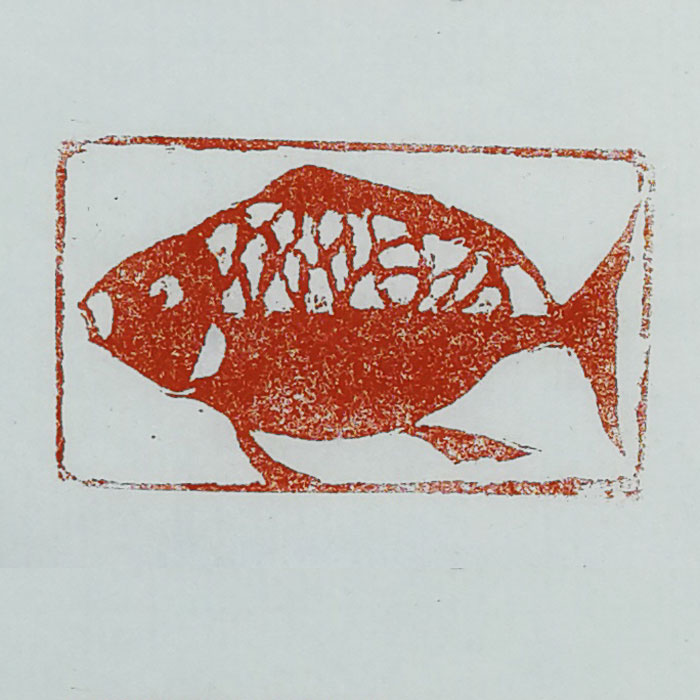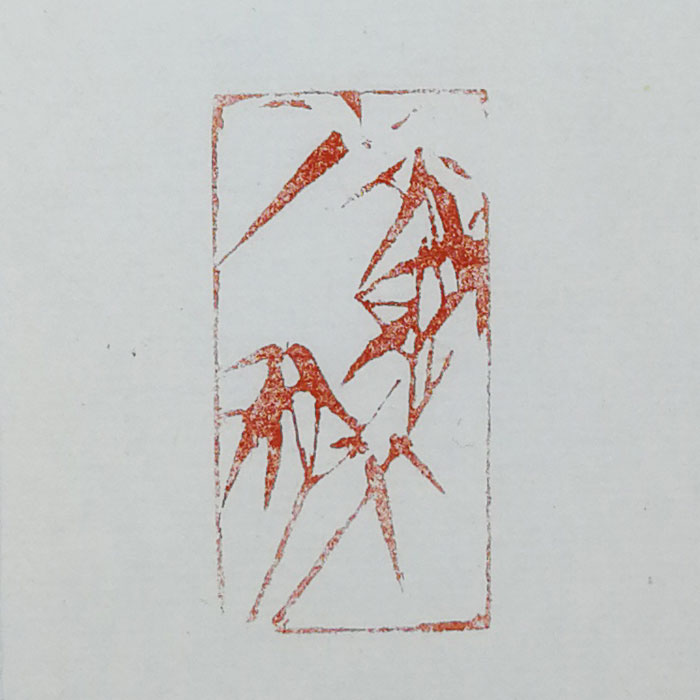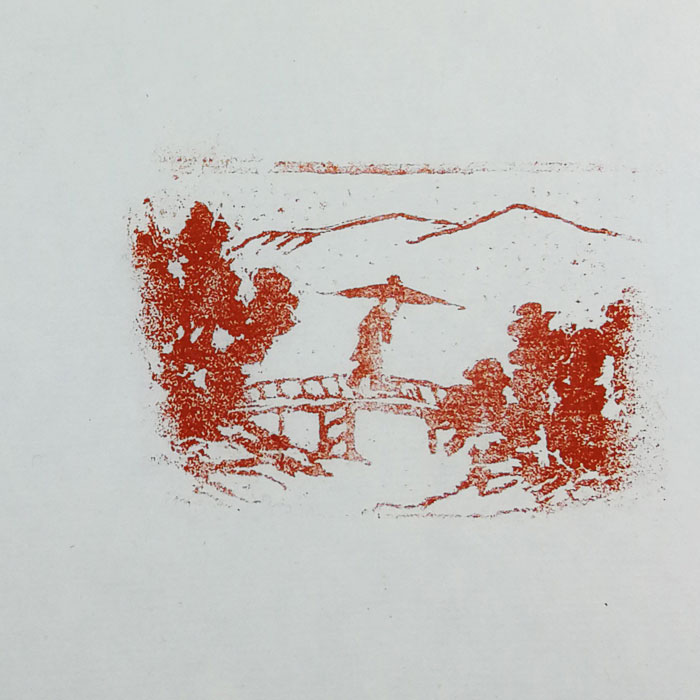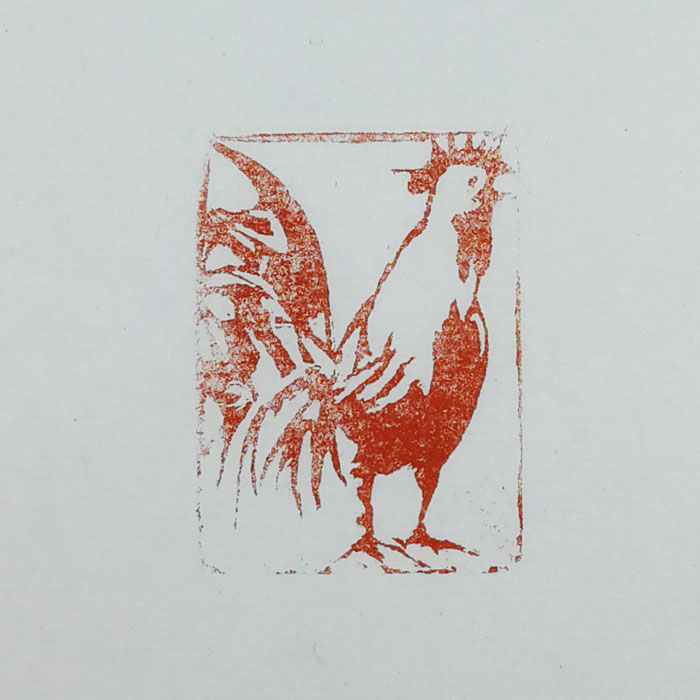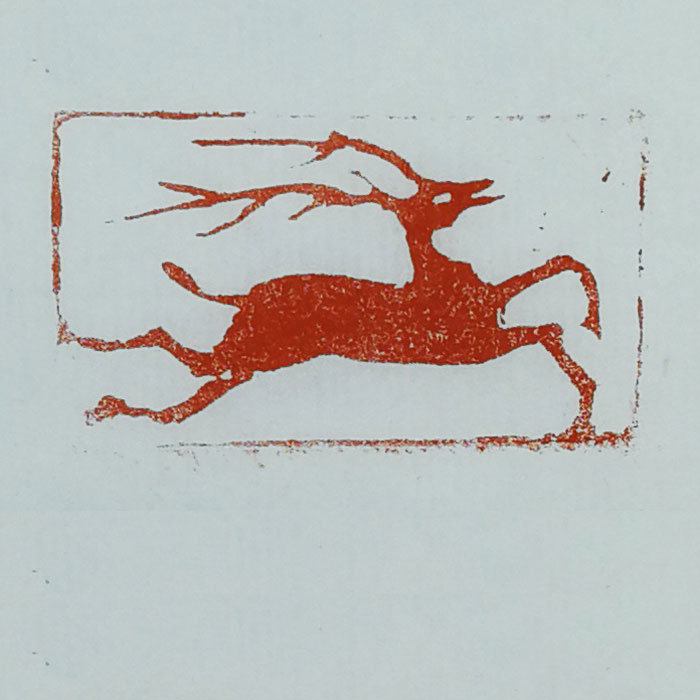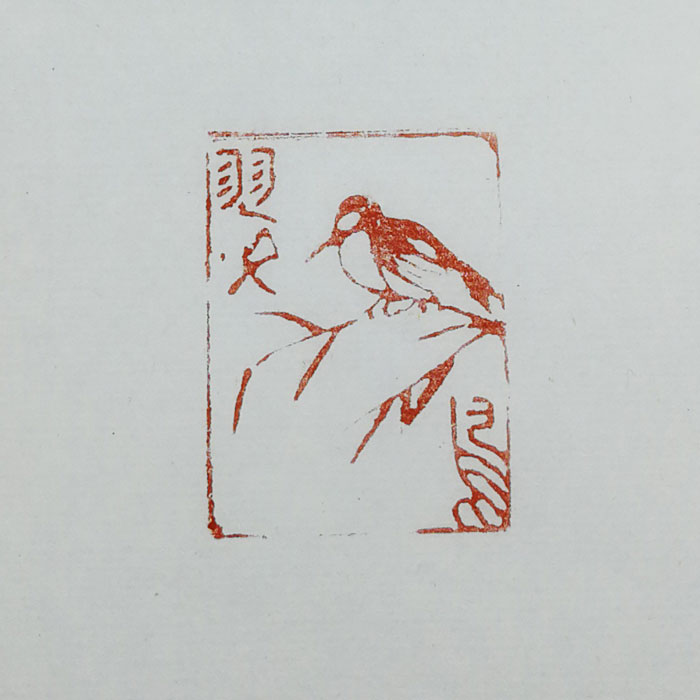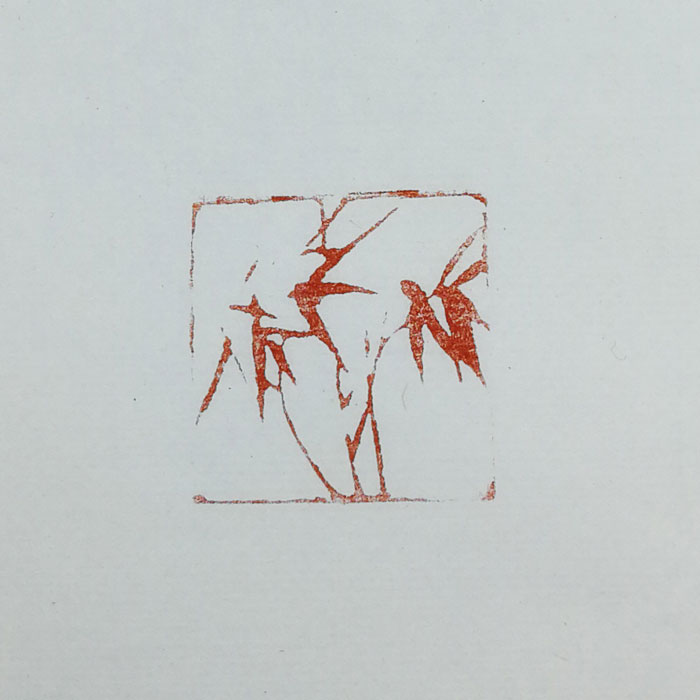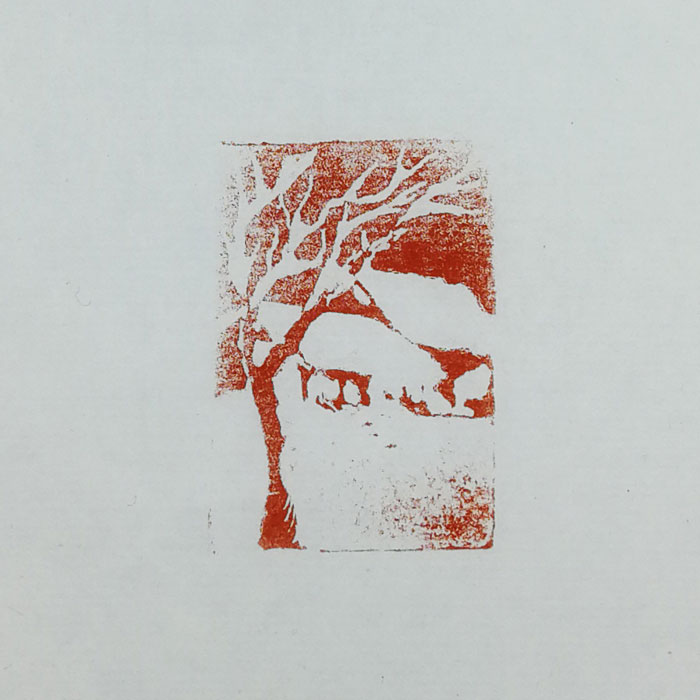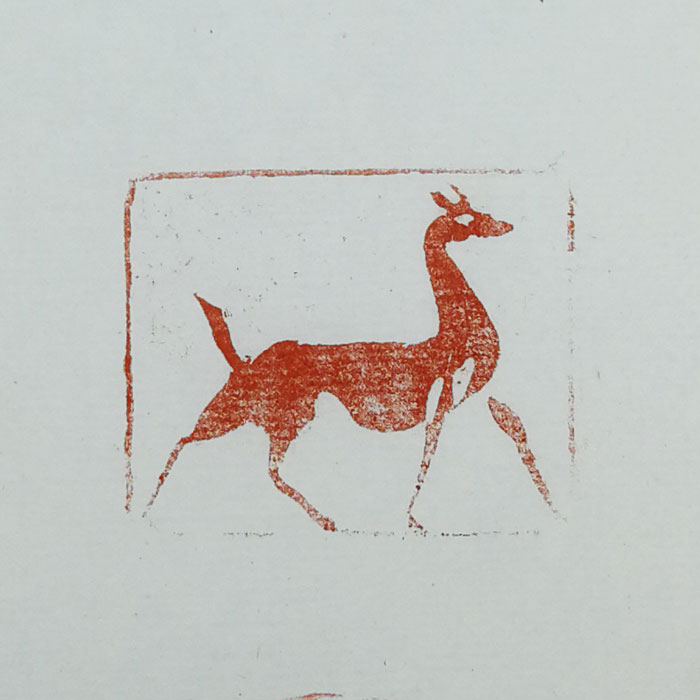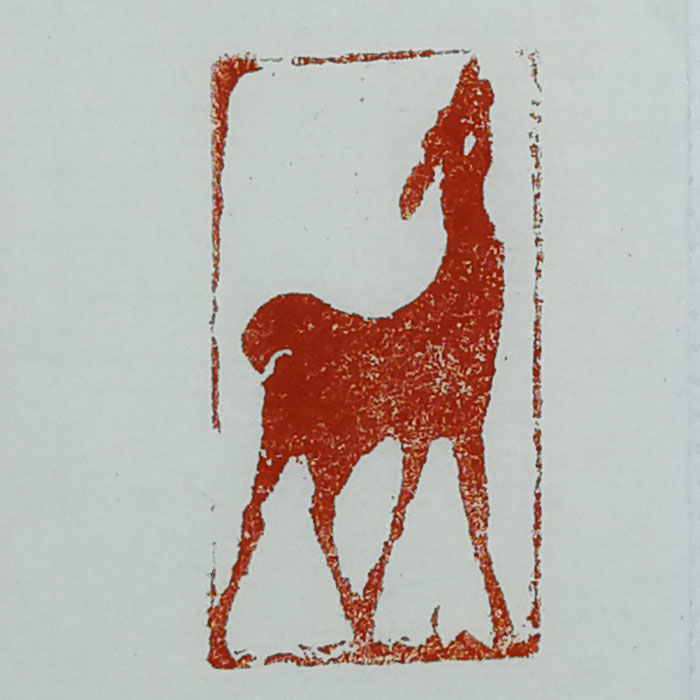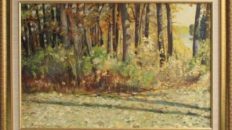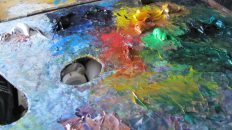In China, the seal is known as xǐ (玺) which means the seal itself or yìn (印) which means the seal imprint.
Origin and utility
Since the invention of writing, the seal has been a graphic identification that was first used by the emperors of China to sign their official acts. It was a mark of power. Almost 4,000 years ago, the use of a seal was a symbol of administration under the Shang and Zhou dynasties. It was during the Ming period that seal engraving became a traditional art in itself. Seals were then used by artists to sign their works of art. They often have a series of seals to sign different works. Nowadays, seals are commonly used in China as a signature, often affixed next to a hand signature. It is a form of calligraphy for authenticating official documents, transactions and marriage certificates. A quality seal engraved in a semi-precious stone has a value between ¥ 400 (CAD $ 76) and ¥ 4000 (CAD $ 760) depending on the artist who created the seal. Seals often bear the name of the person or company they represent and they can be a decoration, an animal, a poem or any other graphic relevant to its use.

Po Shin Lau signature created by Chusheng Lai (來楚生) 
Po Shin Lau signature by Po Shin Lau (樓寶善, 楼宝善)

Po Shin Lau signature by Juntao Qian (錢君匋) 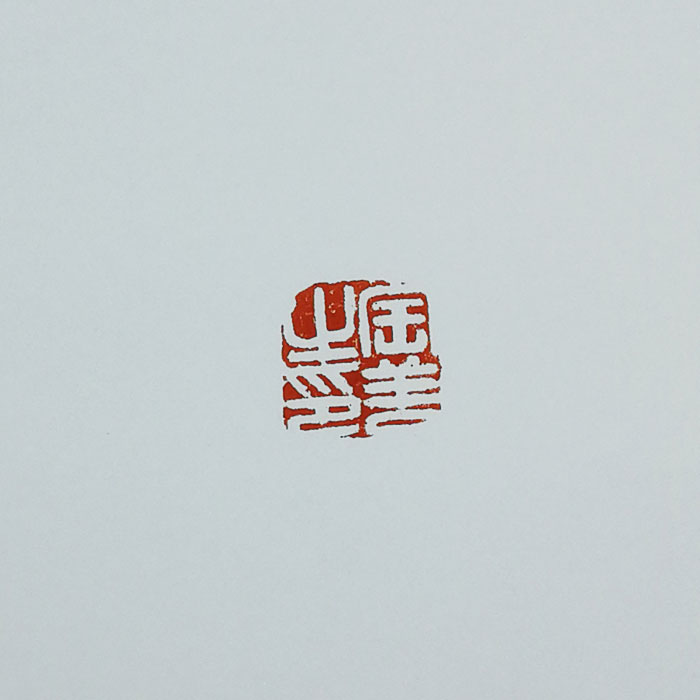
Po Shin Lau signature by Po Qing Lau (樓寶慶)

Seal making
The engraving of seals is a traditional Chinese art. They are usually made from stone and can come in different shapes and sizes. Other materials, hard or soft, can also be used:
- Ceramic
- Wood
- Bamboo
- Copper
- Bronze
- Silver
- Gold
- Jade
- Crystal
- Precious stone
- Steatite (soapstone)
A seal is made up of four parts: the handle, the body, the sides and the face. Decorative motifs, in the form of engravings, may cover the seal. They are often landscapes, birds or flowers. The engravings on the face of the seal should follow a calligraphy style and the characters should cover the space appropriately. It was for these reasons that during the Han Dynasty, seal engraving became an art form of remarkable delicacy. The seals of this period on which are engraved poems and prose are national treasures.

Chinese seal in stone by Po Shin Lau 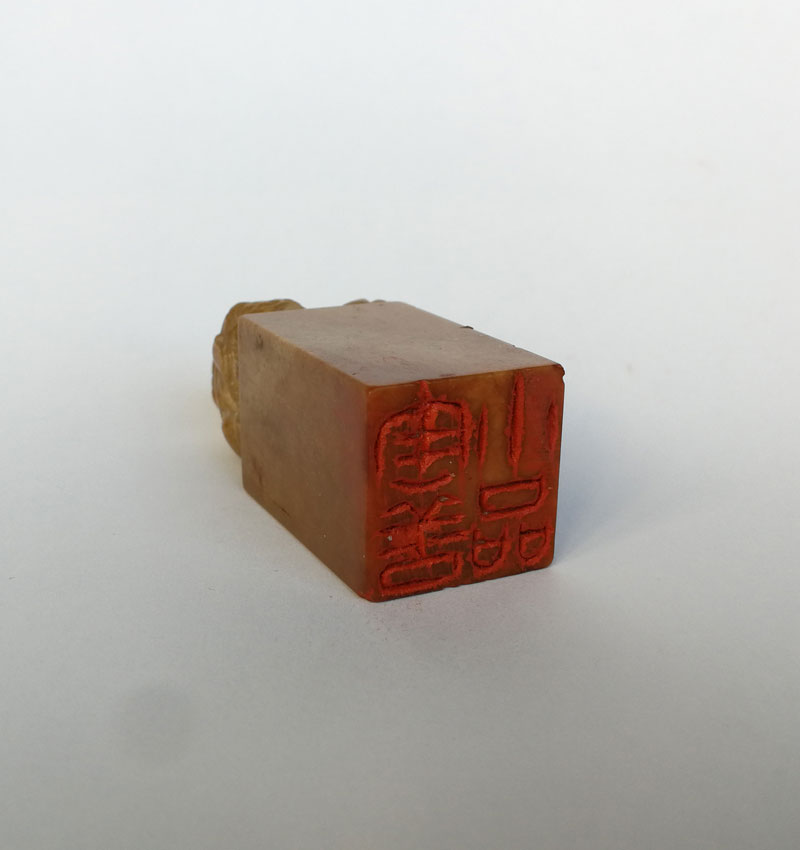
Chinese seal in stone by Po Shin Lau 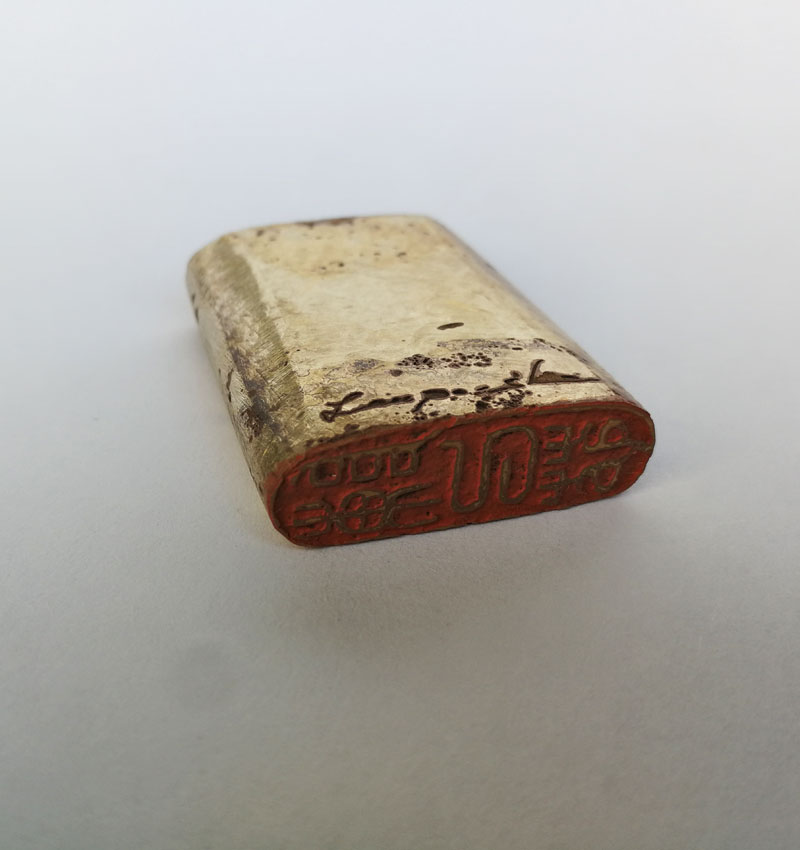
Chinese seal in bronze by Po Shin Lau 
Chinese seal in stone by Po Shin Lau 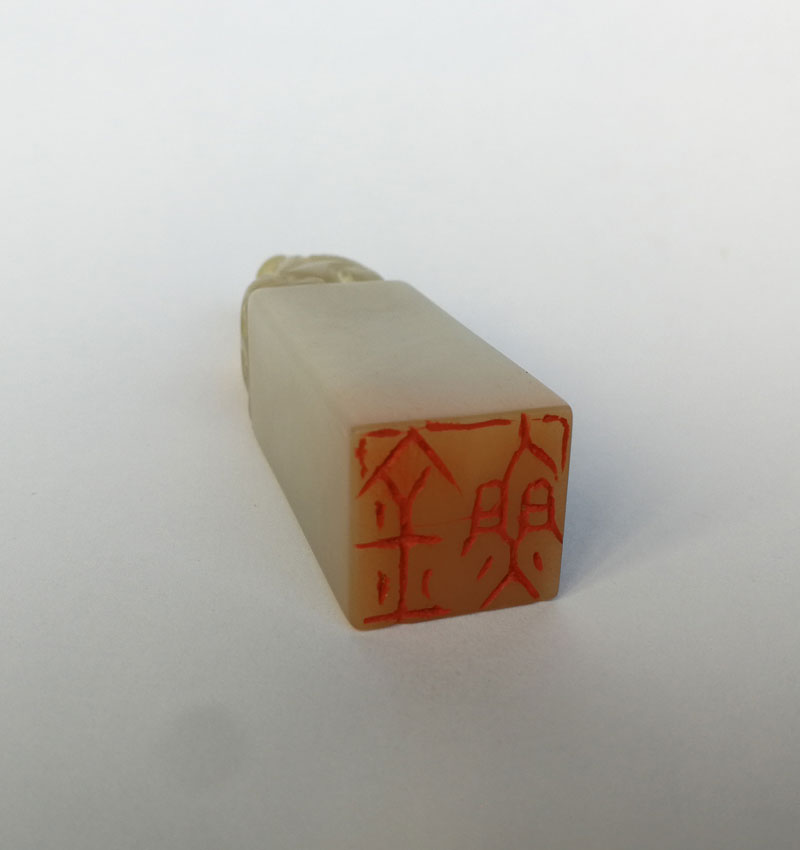
Chinese seal in stone by Po Shin Lau
Traditional seal making technique
For the creation of seals, the 2 most commonly used engraving techniques, with the use of an engraving knife, are as follows:
- chōng dāo (衝 刀 engraving): cursive engraving in a continuous line where the engraving is carried out without the hand rising.
- qiē dāo (切刀) engraving: engraving by successive contacts of several short sizes depending on the width of the knife to be engraved.
The hollow incised seals bear the name of Yin which means feminine energy and the embossed engraved seals bear the name of Yang which means masculine energy. The first seals that were first famous in the East were Yin seals.
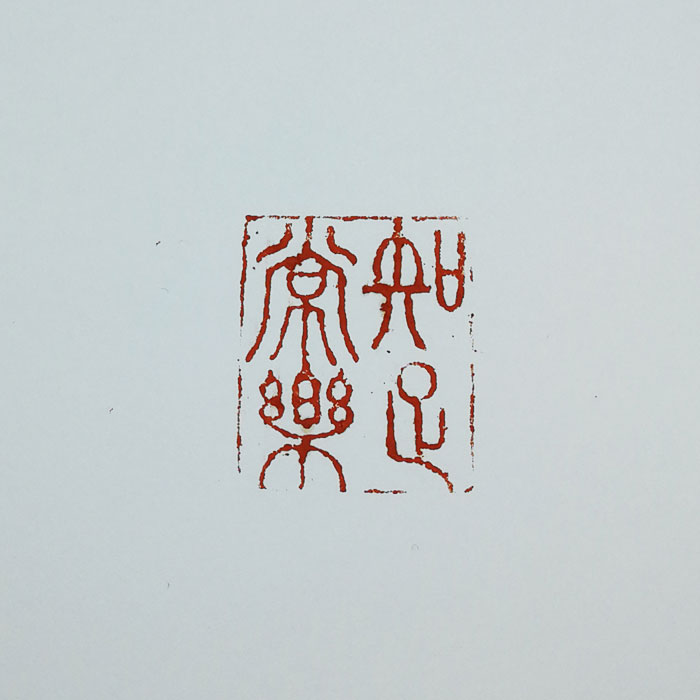
Yang Chinese seal 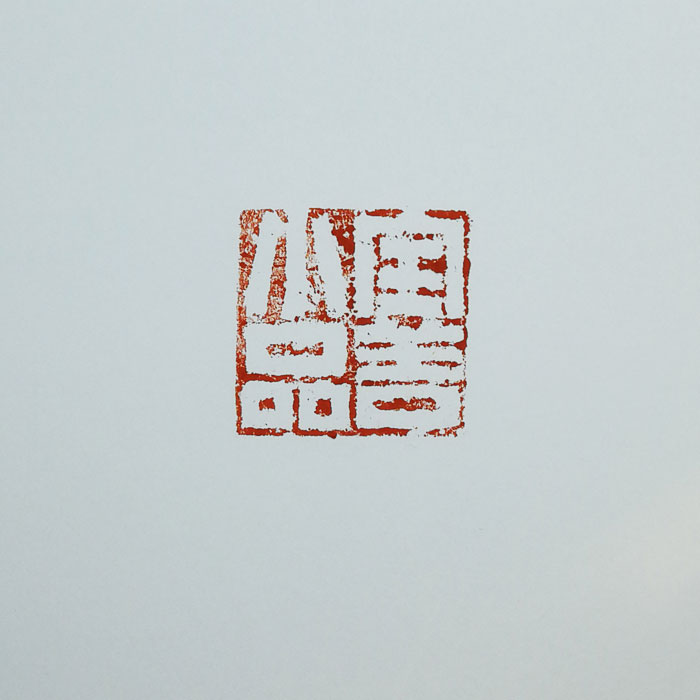
Yin Chinese seal
Seal Engraving Schools
There were several seals engraving schools, the most important of which were:
- Zhejiang School, abbreviated as Zhe School (浙派, zhè pài), which was major during the Ming (1368-1644) and Qing (1644-1912) dynasties.
- Anhui School, abbreviated as Wan School (皖 派, wǎn pài), which was of age during the Ming (1368-1644) and Qing (1644-1912) dynasties.
- Shanghai School, abbreviated as Hai School (海派, hǎi pài), which was major during the end of the Qing Dynasty (1644-1912) and the period of the Republic of China on the mainland (since 1912).

Application of the seal and inking on a work of art
Choosing the right seal to use according to the work of art, determining the position on the space of the page as well as the energy balance between full and empty, requires a great deal of delicacy. Applying and inking the seal is quite an art in itself.
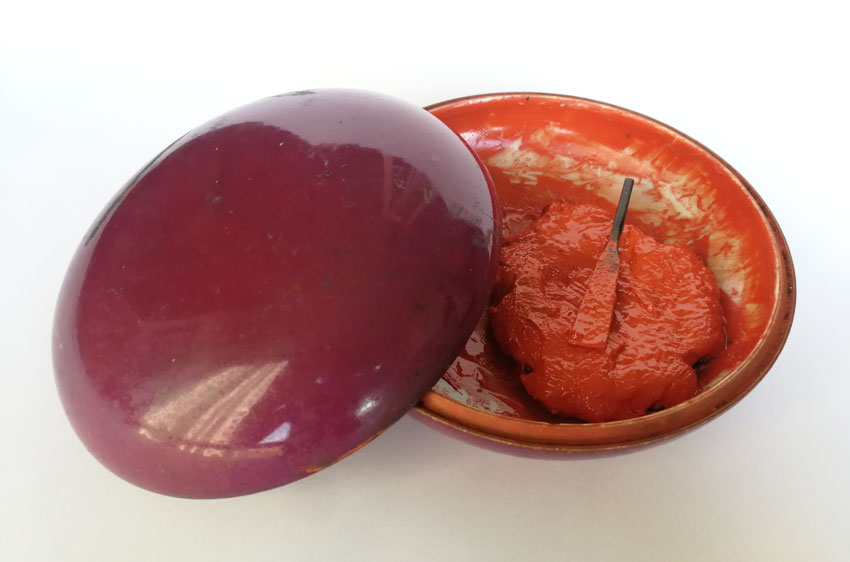
Seals are typically used with red ink that looks like a red paste. This creates a very interesting contrast to the black colour of traditional Indian ink. There are two kinds of red ink:
- Silk-based: the red paste is made of cinnabar reduced to a very fine powder which is mixed with castor oil and fragments of silk threads. This mixture is silk bonded to make a very thick paste with a very oily appearance and a bright red colour.
- Plant-based: the red paste is made from cinnabar reduced to a very fine powder which is mixed with castor oil. The basic ingredient is mugwort. Since the latter is not a binder, the texture of the mixture appears not very homogeneous. The appearance is rather spongy in appearance, and it is a darker red. Mugwort-based red ink dries faster compared to silk-based ink and smears more on paper.
Applying the seal to the paper using silk-based ink should be done with strong pressure with the paper resting on a soft surface by rocking the seal left to right and back and forth.
The application of the seal to the paper using the herbal ink should be done using only light pressure. Vertical removal of the seal could tear the paper, so remove the seal from the paper starting from one side.
Technique of making the seal by etching
Artist Po Shin Lau (樓寶善, 楼宝善) makes his seals with the technique of etching. Having had the opportunity to study art twice in France during 1971 and 1976, he worked at the Monnaie de Paris where he created three medals. Here are the bronze seals he mainly created during the years 2019 and 2021:


